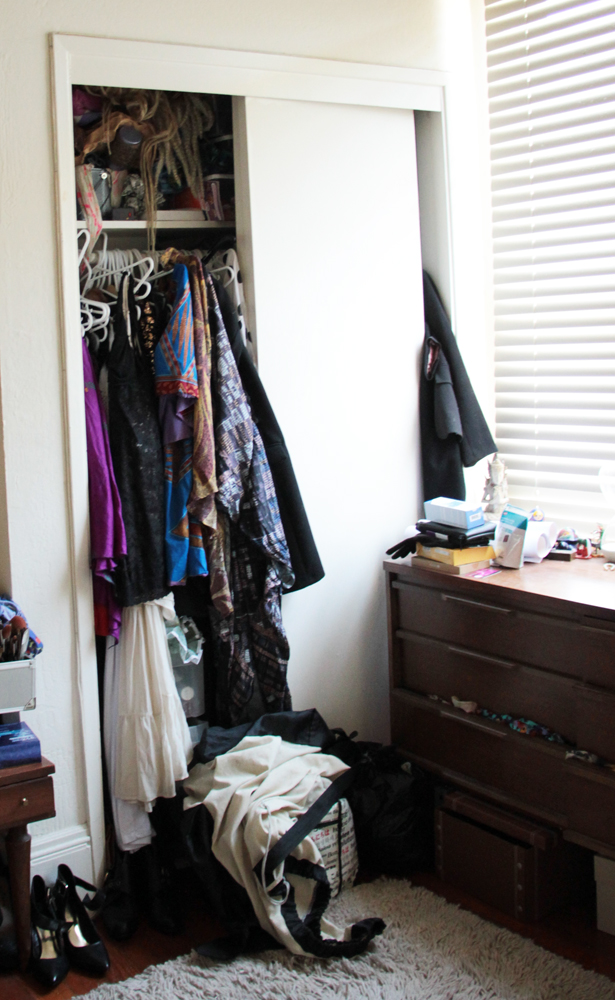Last week I donated two items which had both been really important to me in the past.
The first was a pair of shoes. Not just any pair, my original "fancy" work heels.
I purchased them on a mid-day shopping trip to Neiman Marcus with my former boss/first real mentor. She had demanded that we take a shopping break in the midst of an all-consuming trial preparation month to "clear our minds." We'd been working 12 hour days for weeks. We deserve this, she insisted.
And to be fair, in 2009 I was all about shopping. 3% of my income was being directly diverted into my 401(k), almost half of each paycheck went to rent, and they rest went straight into my "entertainment fund." Said fund was emptied each month in the form of clothing, purses, iPods (I know, I'm really dating myself), and breakfast/coffee/lunch/happy hour/dinner/drinks out. All of which is to say she wasn't exactly twisting my arm.
She bought Manolos, I bought Cole Haans with Nike Air technology. They were more expensive than any clothing item I'd ever owned and were purchased with my own hard-earned money from my real-adult corporate job.
(Side note: I don't have a single photo of "Corporate Cary." Is this because our phones didn't yet function as cameras or because I've never felt less like myself than in a pantsuit?)
Fast forward to today.
Everything else from this time in my life is loooong gone -- all my suits, conservative silk tops, briefcases, tolerance for being yelled at by people who don't even know my name, etc.
But the shoes... After two years of them collecting dust at the top of my closet I knew I was never going to wear them, yet I was really struggling with the thought of letting them go. I felt like they represented this whole period in my life, a point of pride, an old mentorship.
These shoes symbolized to me that I was an independent, adult woman.
The second item was a kelly green Diane Von Furstenberg dress. I purchased this dress (using a Bloomingdale's credit card I signed up for to get 20% off -- oh how I've changed!) also in 2009 as a potential bridesmaid dress for my older sister's wedding.
To date, I've worn it to just shy of a dozen weddings and have celebrated the nuptials of some of my favorite people in the world while wearing it. I wore it in Montana, Tennessee, New Mexico, Chicago (twice), NorCal and SoCal. I wore it while I danced with my best friends, when I celebrated with my family.
So how on earth could I let these memories go?
For exactly that reason: my memories ARE NOT my stuff.
It's easy to confuse the two.
To conflate the experience you had with what you were wearing when it occurred.
To think that the joys of a trip are wrapped up in a souvenir.
But those precious memories are far more resilient and powerful than that. The things that happened in your life cannot be taken away or thrown out in the trash. They are real. And no matter how much or how little "stuff" you have in your life, that will always be true.
As with the case of my precious shoes and dress, it's not that I wanted these things for their functions, they were worn out and no longer my style. What I wanted was to preserve the memories I associated with them.
So how do I know when it's time to let go?
1. It's either a "Hell Yes!" or it's a no. One of my favorite pieces of advice ever comes from Derek Sivers and it's another way of creating incredibly high standards. Essentially, when you're considering whether to keep an object or agree to a commitment, you don't want the answer to be "yeah, sure" or "ok." For something to earn precious space in your life, it needs to be a Hell Yes! Otherwise it's a no. For me, whenever I cannot answer the following questions with a "Hell Yes!" then I know clearly and absolutely that it's time to go:
- Does the item fit into my current life?
- Does the item reflect my current style or does it suit my current needs?
- Do I feel the ways I most want to feel when I use/wear/interact with this item?
- Would I buy the same item again right now at the same price?
2. Take a photo. I kept my shoes and dress because I wanted to be sure I had the occasion to jog my memory about these times in my life. So I took a photo of each and added them to my digital album entitled "Things I love." Now I can see those things and access those memories whenever I want without simultaneously dealing with the clutter and the stress of having things in my life that I don't enjoy anymore.
3. Say Thanks. It might sound silly, but sometimes what we want most when we part with items that meant a lot is to acknowledge them (ahem, like this post). So tell the story aloud of how you acquired it, why you loved it, why you're grateful for the experience it brought you. Then give it a little hug, say thank you (aloud), wish it well as it serves whoever uses it next. Then let it go. *This is how I was able to donate my wedding dress. *
So how do you know when it's time to let go?
Have you ever donated something that used to be incredibly important to you?












